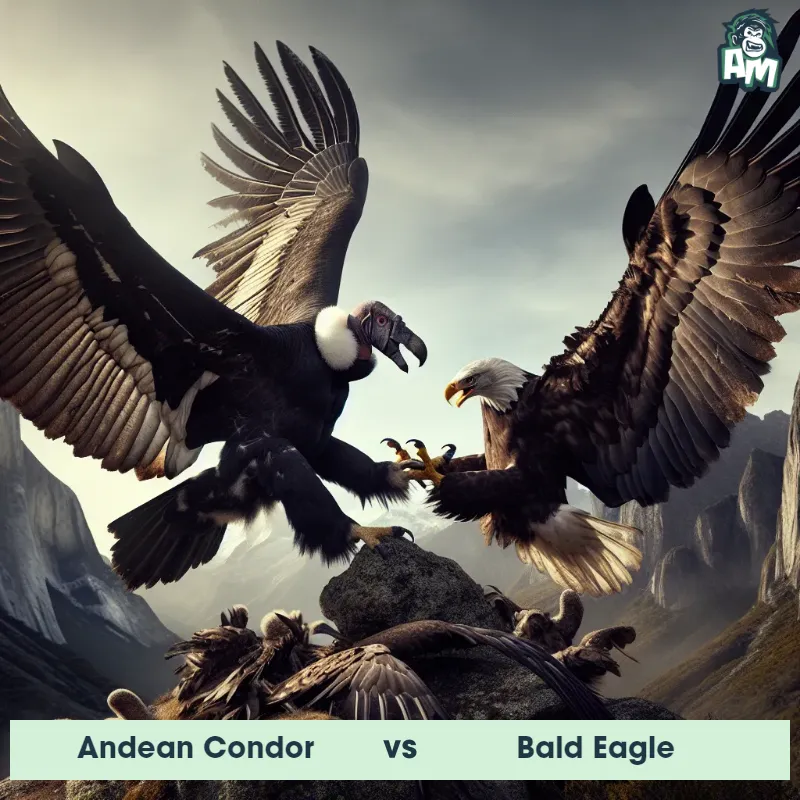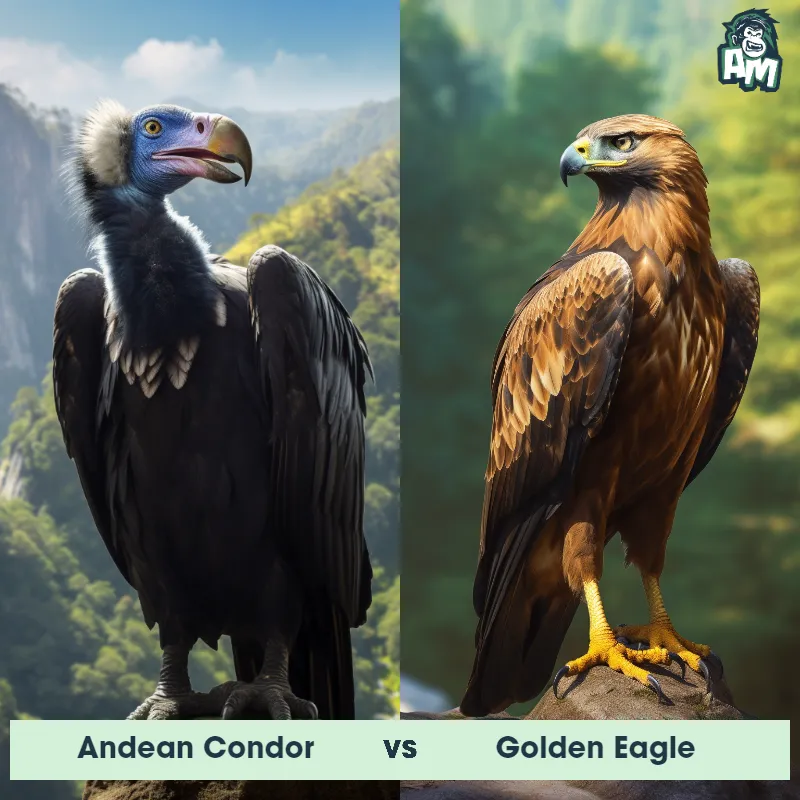The Andean Condor
The Andean Condor, a majestic bird of prey, is one of the largest flying birds in the world. With a wingspan of up to 10 feet, it is renowned for its impressive size and soaring abilities. Its plumage is primarily black, but it features distinctive white patches on its upper wings. The condor has a featherless head adorned with fleshy, pinkish skin, and both males and females possess a unique comb-like structure on top of their heads. Known for their scavenging habits, these magnificent birds are commonly found in the mountainous regions of the Andes in South America.

| Andean Condor | |
|---|---|
| Size | Wingspan up to 10 feet (3 meters) |
| Weight | Up to 33 pounds (15 kilograms) |
| Speed | Speed: 55 mph (88.5 km/hr) |
| Key Strength | Powerful wings and sharp talons |
| Biggest Weakness | Vulnerable to attacks on the ground |
| Scientific Name | Vultur gryphus |
| Family | Cathartidae |
| Habitat | Mountains |
| Geography | Andes Mountains of South America |
| Diet | Carrion (dead animals) |
| Lifespan | 50 years - 75 years |

The Andean Condor
The Andean Condor, a majestic bird of prey, is one of the largest flying birds in the world. With a wingspan of up to 10 feet, it is renowned for its impressive size and soaring abilities. Its plumage is primarily black, but it features distinctive white patches on its upper wings. The condor has a featherless head adorned with fleshy, pinkish skin, and both males and females possess a unique comb-like structure on top of their heads. Known for their scavenging habits, these magnificent birds are commonly found in the mountainous regions of the Andes in South America.
Fun Fact: The Andean Condor is an extremely long-lived bird, with individuals often living for over 50 years in the wild - making them one of the longest-living bird species.
| Andean Condor | |
|---|---|
| Size | Wingspan up to 10 feet (3 meters) |
| Weight | Up to 33 pounds (15 kilograms) |
| Speed | Speed: 55 mph (88.5 km/hr) |
| Key Strength | Powerful wings and sharp talons |
| Biggest Weakness | Vulnerable to attacks on the ground |
| Scientific Name | Vultur gryphus |
| Family | Cathartidae |
| Habitat | Mountains |
| Geography | Andes Mountains of South America |
| Diet | Carrion (dead animals) |
| Lifespan | 50 years - 75 years |
Match Highlights
Andean Condor Matchups
We use AI to simulate matchups between the Andean Condor and other animals. Our simulation considers size, strength, and natural predatory behaviors to determine the most likely outcome.

Can't find the Matchup you want?
Create Your Own MatchupAndean Condor: Diet, Predators, Aggression, and Defensive Behaviors
What do Andean Condors eat?
Andean Condors are scavengers and primarily feed on carrion, including the remains of large mammals like deer and cattle. They also consume smaller animals like rodents and birds, as well as insects. These massive birds have an impressive wingspan of up to 10 feet, allowing them to soar long distances in search of food.
Do Andean Condors have any predators?
While adult Andean Condors do not have many natural predators due to their large size and powerful beaks, young condors may fall prey to animals like foxes, bobcats, and large birds of prey. Eagles and pumas have been known to attack condor chicks or eggs in their nests.
Are Andean Condors aggressive?
Andean Condors are not typically aggressive towards other animals, as they primarily rely on scavenging for food rather than hunting live prey. However, they may become aggressive when defending their territory or during disputes over food sources with other condors.
Do Andean Condors engage in fights?
Andean Condors may engage in physical fights with other condors, especially during breeding season or when competing for food. These fights can involve aggressive posturing, lunging with their powerful beaks, and using their sharp talons to intimidate rivals.
How do Andean Condors defend themselves?
Andean Condors have several mechanisms for defending themselves against threats. They can use their sharp beaks and strong talons to ward off predators or rivals during fights. They also have the ability to fly long distances at high altitudes, allowing them to escape dangerous situations quickly.
What is the Andean Condor's biggest weakness in a fight?
Despite their impressive size and strength, Andean Condors have a vulnerability in their relatively slow movement on the ground. If forced to fight on land, they may struggle to defend themselves against faster and more agile predators like foxes or smaller birds of prey. However, their ability to take flight quickly can often help them avoid confrontations on the ground.
Fun Fact: Unlike other vultures that rely on their sense of smell to find carrion, the Andean Condor primarily uses its keen eyesight to locate food sources from the sky, soaring at high altitudes in search of carcasses.
Fun Fact: Andean Condors are renowned for their impressive flying abilities and can reach altitudes of up to 18,000 feet - a remarkable feat for a bird of their size. They use thermal updrafts to glide effortlessly across the sky, conserving energy during flight.








































